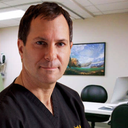Posted underFacial Fat Transfer q&a
Multiple Liposuctions or Steroid Injections to correct Facial Fat Transfer Overfill? (Photo)
5 1/2 months ago I was to have fat graft to correct hollows under my eyes and NL folds. When I woke he had injected fat to my cheeks, cheekbones and jawline. I now have a round face, undefined jawline, downturned lips, droopy cheeks and jowls. 14 days ago (5 mths after the FT), he liposuctioned my jawline and lower cheeks. My cheeks are thinner, but the jowls on the sides of my chin look worse. Can it be the LS swelling ? Should I have more LS or try steroids even 7 months after FT? Thanks in advance
Answers (4)
From board-certified doctors and trusted medical professionals
Dr. Robert M. Tornambe, MD

Dr. Robert M. Tornambe, MD
Board Certified Plastic Surgeon
Answer
Dr. Kenneth D. Steinsapir, MD

Dr. Kenneth D. Steinsapir, MD
Oculoplastic Surgeon, Board Certified in Ophthalmology
Answer
Dr. Samir Shureih, MD
Dr. Samir Shureih, MD
Board Certified Plastic Surgeon
Answer
Dr. William J. Seare, MD (retired)
Dr. William J. Seare, MD (retired)
Board Certified Plastic Surgeon
Answer
More Facial Fat Transfer Questions
See all Facial Fat Transfer Q&AWE SEND PRETTY
EMAILS
What’s trending? Who’s turning heads? Which TikTok myths need busting? We’ve got you. No fluff, no gatekeeping—just real talk. Get our free, unfiltered newsletter.